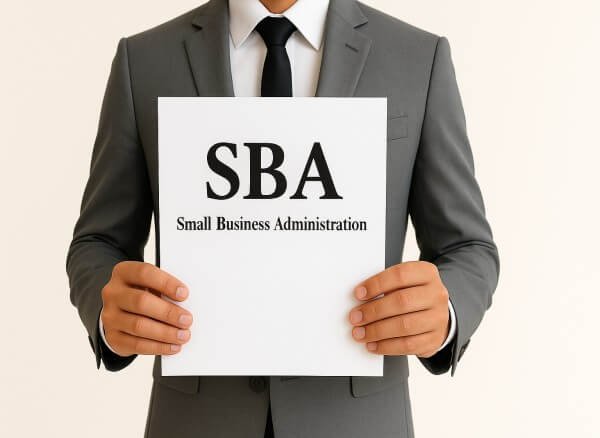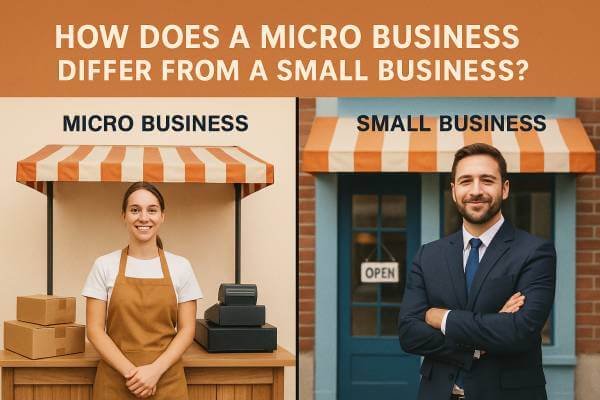How the SBA Defines a Small Business by Industry
If you’ve ever looked into getting a loan or government contract, you’ve probably seen the term SBA small business tossed around. But here’s the catch: not every small business qualifies the same way. The Small Business Administration (SBA) doesn’t use a one-size-fits-all definition. What counts as “small” actually depends on your industry, revenue, or employee count.
So, while a local bakery might be considered small with just a few staff, a manufacturing company could have 500 employees and still fall under the same label. It all comes down to SBA size standards, and those are based on something called a NAICS code.
This article will break down exactly how the SBA defines a small business based on industry. You’ll see how different sectors are measured, why these definitions matter, and how to figure out where your business stands.
What Are SBA Size Standards?
SBA size standards are the official rules the Small Business Administration uses to decide if your business is considered “small.” These standards help determine whether you’re eligible for things like government contracts, SBA loans, and federal programs designed for small businesses.
There are two main factors the SBA looks at:
1. Number of Employees
The SBA judges some industries based on the number of people on your team. For example, a manufacturing company might qualify as a small business if it has 500 or fewer employees.
2. Average Annual Revenue
Other industries go by how much money you make in a year. For instance, a retail business making less than $41.5 million annually could still be considered small, depending on what it sells.
The standard is different for every industry. The SBA uses a system called NAICS (North American Industry Classification System) to group businesses by sector, and each group has its own size limit.
So, a “small business” in construction might have an entirely different size cut-off than one in tech, retail, or healthcare. That’s why it’s important to understand how your specific industry is classified.
How Industry Affects the Definition of a Small Business
The SBA doesn’t use the same size rule for every business. Instead, it looks at your industry type to decide what qualifies as “small.” This analysis is done using NAICS codes (North American Industry Classification System).
Each business category under the NAICS system has its own size standard, which is determined by either:
- Number of employees, or
- Average annual revenue
Two businesses can look entirely different on paper but still both qualify as SBA small businesses. For example:
- A tech startup might make $10 million a year and still be considered small
- A retail store might have 25 employees but go over the revenue limit and not qualify
- A construction company could have 200 employees and still meet the criteria
This industry-specific approach is what keeps things fair, since different industries operate on different scales. A healthcare provider, for instance, has very different overhead and profit margins than a landscaping company.
That’s why knowing your NAICS code is so important. It determines the exact limits that apply to your business.
Common Industries and Their SBA Size Standards
The SBA small business size standards vary across industries. These examples will help you see where your business might fit.
1. Retail and Service Businesses
We measure most retail and service-based businesses by their average annual revenue.
- Clothing store: under $41.5 million
- Hair salon or barber shop: under $9.5 million
- Local gym or fitness center: under $11 million
- Restaurant or catering business: under $11 million to $19 million, depending on services
These numbers might sound high, but they’re meant to cover a wide range of business types, from mom-and-pop shops to multi-location chains.
2. Construction
Construction companies are usually judged based on revenue, not employees.
- General contractors: under $45 million
- Specialty trade contractors (like electricians or plumbers): under $19 million
- Residential remodelers: under $19 million
Even mid-sized construction firms often qualify under these guidelines.
3. Manufacturing
In this industry, the SBA looks at the number of employees, not revenue.
- Furniture manufacturing: under 500 employees
- Electronics manufacturing: up to 1,250 employees
- Textile manufacturing: up to 1,500 employees
Manufacturing tends to have higher limits due to labor and production needs.
4. Wholesale Trade
This sector is almost always defined by employee count, not revenue.
- Wholesale food distributors: under 100 employees
- Apparel wholesalers: under 100 employees
These cutoffs are much lower than in other industries.
5. Information and Tech Services
We typically measure tech companies by their annual revenue.
- Software development firm: under $34 million
- Digital marketing agency: under $25.5 million
- IT consulting business: under $34 million
These businesses often stay lean, so the revenue cap is more relevant than team size.
6. Health Care and Social Assistance
This category includes everything from medical offices to social service providers.
- Home health care agency: under $19.5 million
- Diagnostic lab: under $41.5 million
- Physical therapy clinic: under $19.5 million
As with others, size limits depend heavily on your exact service offering.
SBA Small Business Size Standards by Industry
| Industry | SBA Size Standard | Measurement Type |
| Retail (Clothing Store) | Up to $41.5 million in annual revenue | Revenue |
| Hair Salon / Barbershop | Up to $9.5 million in annual revenue | Revenue |
| Restaurant / Catering | Up to $19 million in annual revenue | Revenue |
| General Construction | Up to $45 million in annual revenue | Revenue |
| Specialty Contractors | Up to $19 million in annual revenue | Revenue |
| Furniture Manufacturing | Up to 500 employees | Number of Employees |
| Electronics Manufacturing | Up to 1,250 employees | Number of Employees |
| Apparel Wholesalers | Up to 100 employees | Number of Employees |
| Software Development Firm | Up to $34 million in annual revenue | Revenue |
| Digital Marketing Agency | Up to $25.5 million in annual revenue | Revenue |
| Home Health Care Agency | Up to $19.5 million in annual revenue | Revenue |
| Diagnostic Medical Lab | Up to $41.5 million in annual revenue | Revenue |
Where to Find Your Industry’s SBA Size Standard
Now that you know size standards vary by industry, the next step is to look up the exact criteria for your business. The SBA makes this easy with a few tools you can use right now.
1. Find Your NAICS Code
Your NAICS code (North American Industry Classification System) is the key to identifying your industry. It’s a six-digit number used by the SBA, IRS, and Census Bureau.
How to find it:
- Use the NAICS Search Tool at naics.com or census.gov
- Type in a keyword that describes what your business does
- Choose the code that most closely matches your primary activity
Example: If you run a web design business, your NAICS code might be 541511 for “Custom Computer Programming Services.”
2. Use the SBA Size Standards Table
Once you know your NAICS code, go to the SBA’s Table of Small Business Size Standards. You’ll see the size limits for each code, based on either revenue or employee count.
You can also use the Size Standards Tool on the same page. Please enter your NAICS code, and it will display your specific size limit.
3. Check Your Current Numbers
Now, compare yours:
- Total number of employees
- Average annual receipts over the past 3 years
If you’re under the threshold for your NAICS code, good news, you qualify as a small business under SBA rules.
Why These Definitions Matter
How your business is classified can determine whether you qualify for funding, contracts, and growth opportunities that are only available to small businesses.
1. SBA Loans
Only businesses that meet the SBA’s size standards can apply for certain types of low-interest loans, including microloans and 7(a) loans. If your business is technically “too large,” you could miss out.
2. Federal Contracting Opportunities
The U.S. government sets aside billions of dollars each year specifically for small business contracts. To be eligible, you must be classified as a small business by the SBA. This includes opportunities for:
- Minority-owned businesses
- Women-owned businesses
- Veteran-owned businesses
- Disadvantaged small businesses (8a program)
3. Small Business Certifications
Size standards are used to determine whether you can get certified as a small business through SBA programs. These certifications boost your visibility and credibility when bidding for work or applying for grants.
4. Grant and Resource Eligibility
Some local and federal grants, tax breaks, and training programs are only available to businesses under the SBA threshold. If you don’t meet the standard, you may get disqualified before your application is even reviewed.
5. Competitive Advantage
Being officially classified as a small business can help you stand out, especially when competing for work against larger companies. You may be eligible for special set-aside opportunities or preferred vendor lists.
Knowing how your business is classified isn’t just about labels. It’s about access to resources that can help you grow, stabilize, or scale without having to compete directly with big corporations.
What to Do If You’re On the Borderline
What should you do if your business is on the verge of meeting the SBA size standard? Maybe your revenue is creeping up toward the limit, or your employee count is getting close. You still have options, and now is the perfect time to plan ahead.
1. Double-check how the SBA calculates size
The SBA employs a three-year average to determine annual revenue. This implies that a single year of high income may not necessarily surpass the threshold, particularly if the preceding years were of lower income.
For employee count, the SBA looks at the average number of employees over 12 months, including all full-time and part-time staff.
Therefore, if you briefly exceed the threshold, it doesn’t necessarily disqualify you.
2. Talk to a local SBA office or SBDC
If you’re unsure where you stand, reach out to a Small Business Development Center (SBDC) or your local SBA office. They offer free support and can walk you through eligibility questions or help with documentation if you’re applying for a loan or certification.
3. Consider how growth might affect your classification
If your goal is to scale beyond the small business category, start thinking about what that means for funding, hiring, and operations. You may grow out of certain SBA programs but gain access to new opportunities, partnerships, or investors.
4. Stay organized and keep records
Track your revenue, employee count, and NAICS code in one place. This makes it easier to respond to RFPs, apply for grants, or complete certifications. It also helps you stay ahead of any changes in the SBA’s size standards.
5. Look at alternatives for support
If you grow past the SBA size limits, you might still qualify for:
- State and local programs
- Industry-specific associations
- Private business grants and financing
Just because you’re no longer “small” by federal standards doesn’t mean you’re on your own.
Conclusion
Figuring out whether your business qualifies as an SBA small business isn’t always as straightforward as it sounds. It’s not just about how much money you make or how many people you hire. It depends on your industry, your NAICS code, and the specific size standards set by the SBA.
Once you understand how the SBA defines a small business based on industry, you can use that knowledge to your advantage. Knowing where your business stands helps you confidently move forward, whether you’re applying for a loan, bidding on a contract, or trying to find the right resources.
So take a few minutes, look up your NAICS code, and check your size standard. You might already qualify for benefits you didn’t even know existed.
Frequently Asked Questions
How does the SBA define a small business?
The SBA defines a small business based on industry-specific size standards, using either the number of employees or average annual revenue. The exact limit depends on your NAICS code.
What is a NAICS code and why is it important?
A NAICS code (North American Industry Classification System) identifies your business type. The SBA uses it to determine which size standard applies to your industry.
How many employees can a small business have?
It depends on the industry. Some businesses qualify with up to 100 employees, while others, like manufacturing, can have up to 1,500 and still be considered small.
What is the revenue limit for small businesses?
Revenue limits vary by industry. Some service-based businesses may qualify with under $8 million, while others (like retail or healthcare) can earn up to $41.5 million and still meet the criteria.
Where can I find my size standard?
Use the SBA’s official Size Standards Table or search your NAICS code to find your business’s revenue or employee limit.












